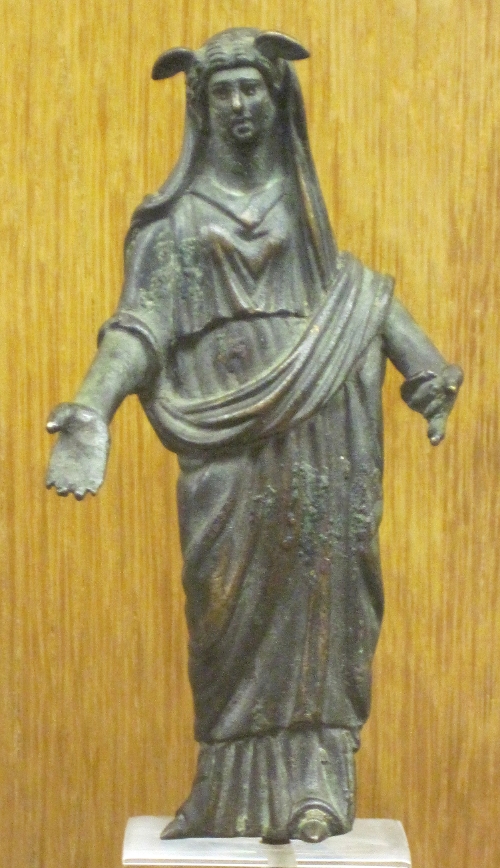
Bronze statuette of Rosmerta, or perhaps of Maia, from Clermont-Ferrand. Note that here it is her head, rather than a cap, that is winged.
(Musée Bargoin, Clermont-Ferrand)
Mercury and Rosmerta · Mercury and Maia · Felicitas · Abundantia

Rosmerta is the main companion of the great god Mercury in worship; at times, she receives a cult of her own. Rosmerta’s image often accompanies Mercury’s; they present a harmonious ensemble sharing the typical attributes of Mercury: winged herald’s staff entwined with snakes (caduceus), purse, winged helmet (petasus, or in her case rather a winged diadem), as well as the rooster and ram.[1] To these attributes Rosmerta may add the cornucopia and at times an offering-dish (patera). The Gaulish name Rosmerta is easily analyzed as “Great Provider”, the “Most Providential” (the intensifying prefix ro- precedes the root smert-, “foreseeing, taking care of, providing”).[2]
From this it may be gathered that the function of Rosmerta is to bestow prosperity; she thus actualizes the work of Mercury in the context of material well-being. Thus, Rosmerta is in relation to Mercury what is known in Greek as a πάρεδρος (paredros), and in Sanskrit as शक्ति (shakti). The harmony between the two deities is complete; the paredros carries out the undertaking of the other.
Rosmerta is one of the most characteristic of Gaulish goddesses. Depictions and inscriptions in her honour are to be found in many Celtic regions, but particularly in the north and east of Gaul. She is the most important of the Celtic goddesses who are regularly associated with Roman gods, a list that also includes Ðirona, Damona, Ancamna, Nemetona, etc.
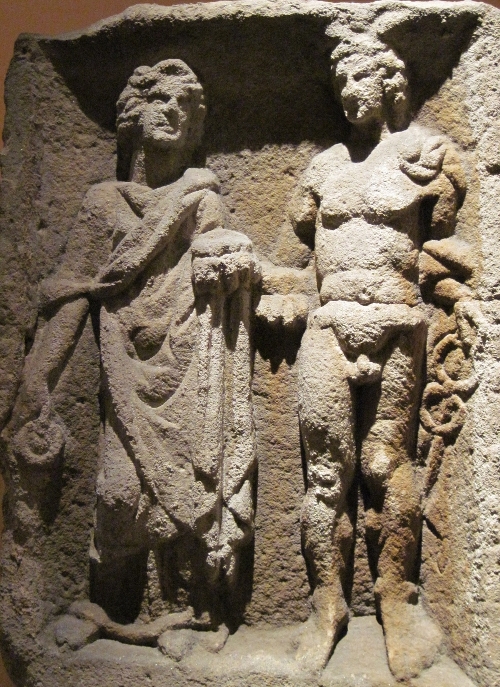
Abundant evidence assures us that Mercury and Rosmerta are closely linked—but precisely how? To say that Rosmerta is Mercury’s paredros does not automatically mean that she is his consort. Did the Gauls conceive of Rosmerta as Mercury’s wife, or else as his mother? daughter? sister?
I do not think that this question can be answered definitively, but let us consider some of its more pertinent aspects. Ordinarily Rosmerta’s face is rather serious and her attire modest. If there is a sexual element in their relationship, it does not play a major part in their iconography (in contrast to depictions of Shiva-Shakti or Mars-Venus, where the erotic element is clear).
There is, however, a stone sculpture in the museum of Saint-Germain-en-Laye that depicts a nearly nude goddess caressing the head of a bearded Mercury. This goddess appears young and voluptuous while it is the turn of Mercury to look older and serious. Clearly this suggests intimacy between the two. Still, in the absence of an inscription or identifying attribute, we can hardly be sure that the goddess is Rosmerta. There are inscriptions elsewhere that associate Mercury with other goddesses, such as Visucia among the Treveri. This depiction is a bit atypical for other reasons too: Mercury has neither petasus nor caduceus, he is bearded, and instead of a rooster or ram there lies in his lap a horned snake. What we have here is thus an early representation, from a rather unstable iconographic phase that could have preceded the appearance of the ‘classical’ Rosmerta.
Rosmerta’s interpretation in terms of Roman mythology may clarify her position with respect to Mercury. Her iconography links her with Maia, the mother of Mercury, to whom we shall return in a moment. It also links her with Felicitas, the divine personification of felicity or good fortune, whose attributes are the cornucopia and the caduceus.[3] A remarkable inscription, CIL VI: 31,141, strengthens this hypothesis. Deposited at Rome by troops of the Equites Singulares Augusti (the ‘Emperor’s Own Cavalry’), a Roman cavalry unit with a strong Gaulish membership, the inscription honours nearly all the major divinities of Gaul. In this inscription, Felicitas is invoked immediately after Mercury, even though the classical Felicitas is not strongly linked with the latter. I interpret this coincidence as a sign that here Rosmerta has been Latinized as Felicitas for the benefit of the local Romans. On the other hand, if the Equites Singulares conceived of Rosmerta as an aspect of Maia, it would be rather striking for them to omit her.
Thus, at least at times, one might have made the distinction between Rosmerta=Felicitas and Maia. But such identifications were doubtless flexible and not absolute.
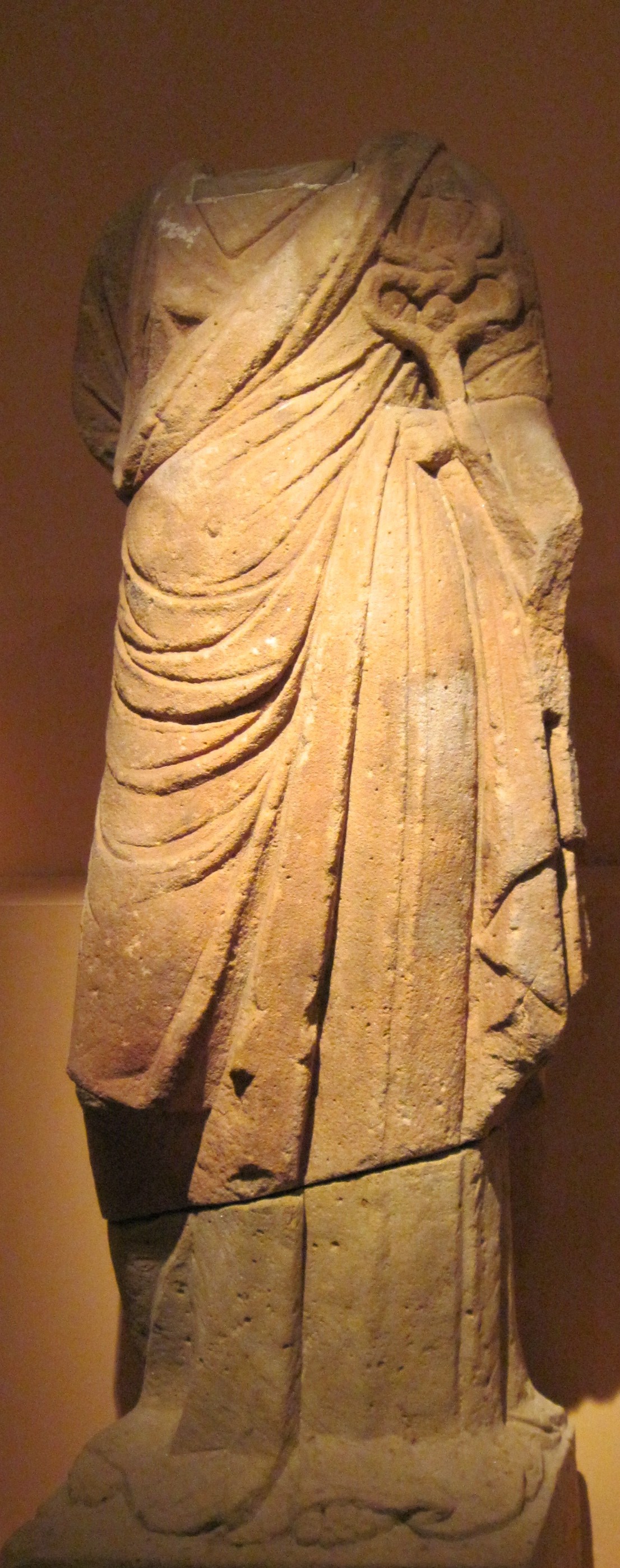
Meanwhile, the Gauls did not neglect the cult of Maia, who was frequently invoked alongside her glorious son (or even alone). In fact, Maia and Rosmerta are broadly speaking in complementary distribution (and not in competition, as can sometimes be the case with mothers- and daughters-in-law!). We find, for example, dedications exclusively to Mercury and Maia in Lugdunum, but exclusively to Mercury and Rosmerta among the Leuci. Not a single inscription mentions Maia in Germania Inferior, Gallia Belgica, Aquitania or the northern areas of Gallia Lugdunensis. Her cult is localized in the Upper Rhône, Saône and Upper Rhine.[4]
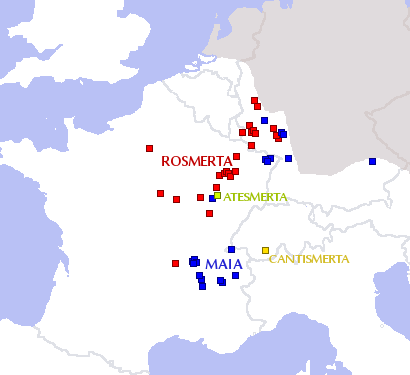
The Roman Maia, armed with a caduceus, was associated with the efflorescence of spring, and thus with natural rather than commercial prosperity.[5] A weak distinction in such regions as these, where commerce essentially concerned the products of the soil.
At Rome, Maia might even pass as Maia Majestas (a wife of Vulcan), as Fauna, as Bona Dea, or as Ops. But normally one would identify Ops with Rhea, the mother Zeus/Jupiter; Maia/Ops would in that case be Mercury’s grandmother rather than his mother. In a polytheistic framework, ‘identifying’ two deities decidedly does not mean confounding them. An identification is made within a context; it does not obscure the original identity of those concerned. As far as a given festival, anniversary or ritual is concerned, Maia may be considered as Ops (patron of the riches of the earth) or as Maia Majestas. Elsewhere, she is considered the progenitrix, and thus the mother, of Mercury (patron of commerce and of comings and goings). No less might she appear at times as his partner, collaborator in his act of generating riches, and thus as his spouse.
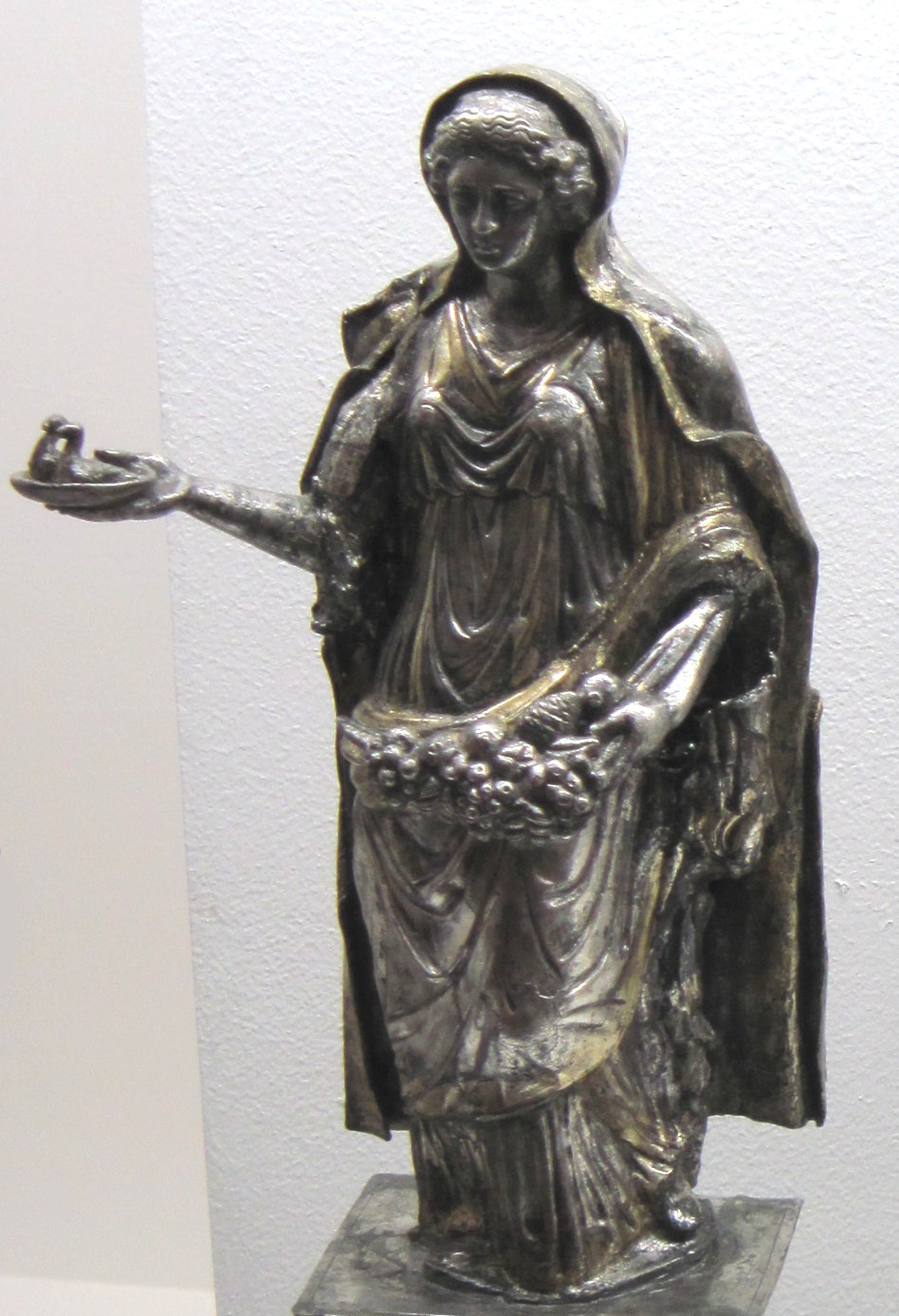
Abundantia, goddess of abundance, also enjoys a cult of her own, for example among the Ædui of what is now Burgundy. Her attributes include an offering-dish and sometimes a cornucopia. Nothing specifically links her to Mercury, nor identifies her with Rosmerta. But might it not be possible that a Gaulish clientèle saw in her image an admirable representation of their Celtic goddess?
The sultan has his vizier, Shiva his Shakti, and God the Father his Holy Ghost. Such, in general, is the relationship between a deity and his or her paredros; the latter makes concrete the plans drawn up by the former. Rosmerta too acts in this way, looking after mortals according to the benefic designs of Mercury. By the Equites Singulares she was in all probability likened to Felicitas, goddess of happy outcomes. Elsewhere she is practically as one with Maia, goddess of the flourishing spring, that burgeoning of nature that promised for the Gauls prosperous harvests of grapes, grains and fruits.
Some scholars have spoken of a ‘divine marriage’ between Celtic goddesses and Roman gods. Nothing, in the general scheme of cultural exchanges as intimate as those between the Romans and the conquered Gauls, could be more natural. In the case of Mercury and Rosmerta, there is some risk of overemphasizing the conjugal nature of the relationship. Mercury and Rosmerta are partners; she completes his work and realizes his undertakings. If the Gauls sometimes conceived of the two as a married couple, there is strong circumstantial evidence that they more often likened them to Maia and Mercury, who in classical mythology are mother and son. In terms of practical cultic application, these questions make little difference. We may look to Rosmerta as a provider for our material well-being, invoking her alongside Mercury (or even alone) to help us help ourselves out of a difficult financial scrape, make our résumés stand out from the pile, or see an investment through to a beneficial return. It is the role of the gods to bring order and clarity to all things; through Rosmerta, Mercury does so in money matters.

